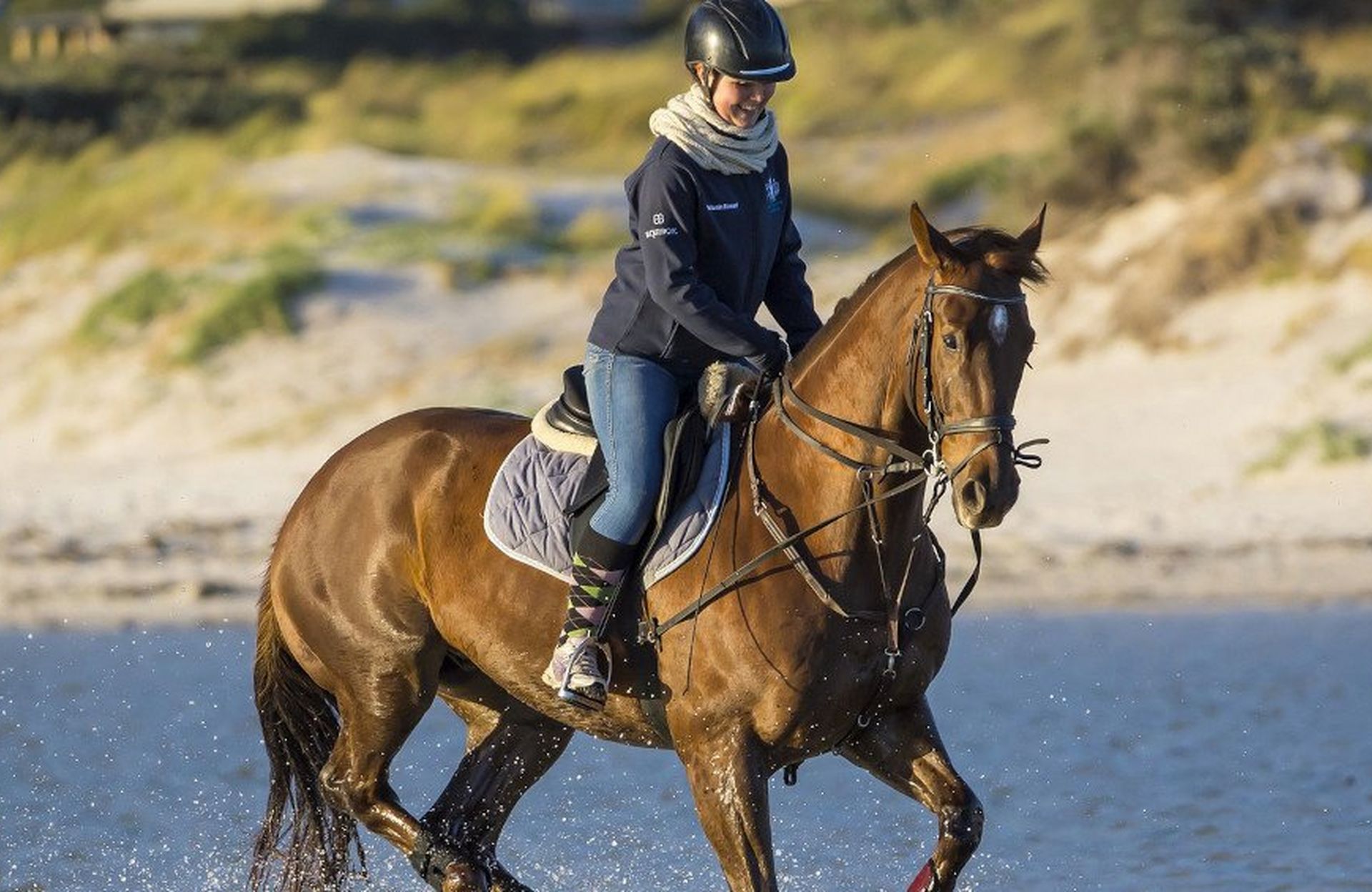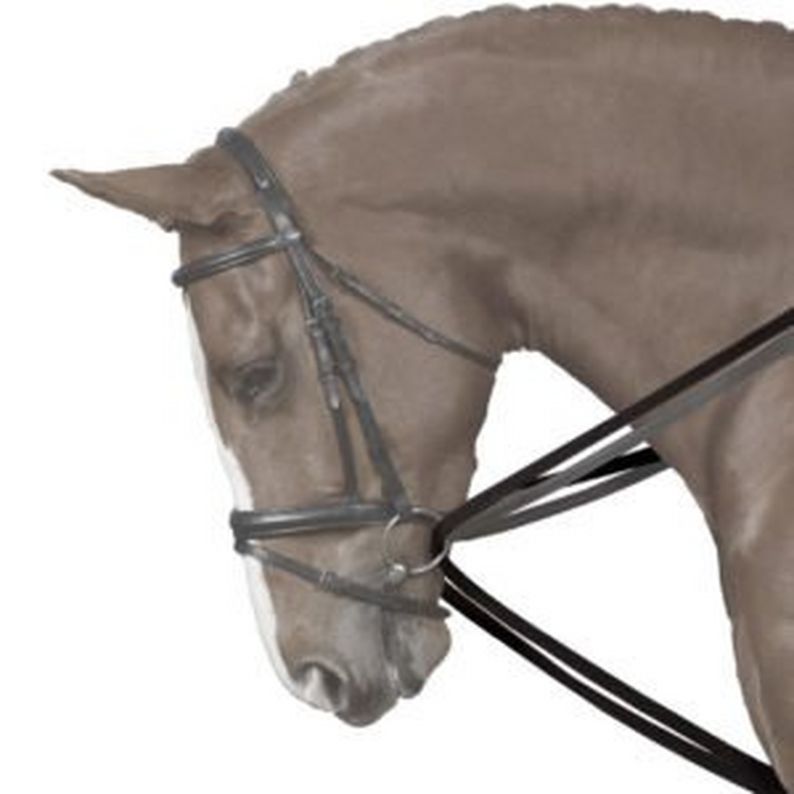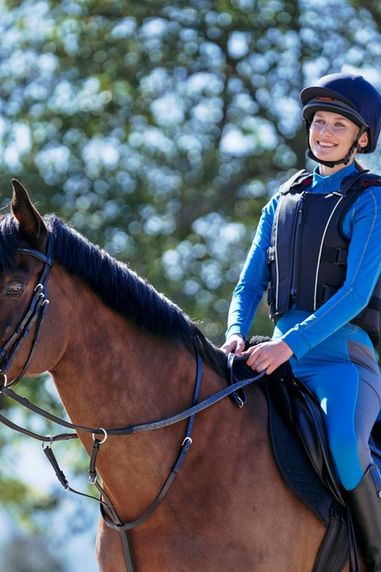
Draw reins can be a little controversial, they’re loved by some and feared by others! The truth is, any training aid can be ineffective and even harmful in the wrong hands. However, when used correctly, for the right reasons, they can help us to bring the best out of our horses! The key is to choose the right training aid, understanding why and how to use it properly. Here we’re going to be taking a look at if draw reins are the right option for you and your horse.

What are Draw Reins?
Given the similar name, you may find yourself wondering “What’s the difference between draw reins and side reins?”. Unlike side reins which are used for ground work, draw reins are a ridden training aid. In fact, they’re pretty similar in appearance to a standard pair of reins just a lot longer, usually somewhere between 15 and 17 feet! They’re generally made from a durable leather or nylon webbing material. If you lay a set of draw reins out flat, you’ll see they have a centre buckle and clips at either end. Most styles will also include girth attachment loops for ease of use.
How To Apply Draw Reins
An addition to your usual equipment, you must first tack up your horse, wearing a snaffle bridle, saddle and boots if required. Taking your draw reins, place the centre buckle on your horse’s wither facing upwards, allowing the reins to fall either side. Stand at your horses shoulder and run your hands down the draw rein to the clip. Thread it through the bit ring, ensuring there are no twists. The clips can then be attached to your girth’s central D-Ring between the front legs or to girth straps. This process should be repeated either side.
Why use draw reins?
Draw reins can be used to:
- Help our horses accept a contact without resistance, developing self carriage.
- Improve head and neck position.
- Develop a well muscled top-line.
- Develop balanced and rhymical gaits.

Have you ever ridden with your horse wearing side reins? You may have found that they hindered your ability to effectively communicate using your rein aids. This is because they’re in a fixed position with a predetermined length, designed to be the primary source of contact with your horse’s bit. Draw reins are designed to work in harmony with our aids as a rider. When we take up contact on draw reins, they act on the bars and corners of your horses mouth applying pressure to the poll. They use leverage from the direction in which you have attached them (downwards or across from your horses mouth). If your horse lifts their head high, opt to attach the draw reins between the front legs. If your horse can become ‘pokey’ riding way in front of the vertical, attach them horizontal to the bit.
How To Use Them Correctly
They’re not a replacement for your usual reins! You should be holding them in the same way as you would with a double bridle, draw reins on the inside, snaffle reins on the outside. Draw reins are for guiding and correcting head and neck position, do not ride from them. They must be held softly, able to move through your fingers until needed. To use them correctly, gently close your fingers as required. This should only be done if your horse moves away from the desired position. They’re never to be used with force or to fix the head in place. This would cause reliance, tension, resistance and leaning into pressure. Once your horse has yielded and is holding their frame as desired, soften your hold immediately.
When
Draw reins should only be used two or three times a week for short sessions in order to avoid soreness. They are to be used during flat work only. Even if you’re only popping a small cross pole, remove them first! During jumping you’re more likely to accidentally pull on the reins. If this was to force your horses head to their chest it could result in pain, a loss of balance and possibly a serious accident. There is also a higher risk of your horse getting their hoof through the reins while jumping.
Practice
Draw reins are a tool which should only be used by experienced riders. You must have an instructor to guide you when using them for the first time. To use them safely you will require very steady hands, the ability to maintain the correct level of contact and the ability to apply rein aids independently of using the draw reins. This should always be practiced and perfected off your horse first.
First Use
If draw reins are new to either you or your horse you must have an instructor to guide you when you first use them. Draw reins can be restrictive when not used sympathetically. If your hold is too tight it can leave your horse feeling trapped, this can cause them to panic.
Eyes On The Ground
Looking down to check your horses head position is far more of a hinderance then a help. Whether you’re using draw reins for the first time or you’ve got lots of experience, it’s a good idea to have a pair of eyes on the ground. An instructor is ideal but when you’re not in a lesson a fellow rider can be really handy. Ask the person watching you to keep an eye that they’re working as desired when used, aren’t too tight when not needed, haven’t become twisted and are not causing distress.
Warming Up
Unlike side reins, you as a rider have control over the tension applied. For your horse, carrying their head in the desired position can require them to engage their neck, back, core and hindquarter muscles. To avoid injury, stiffness and soreness, allow your horse to warm up in their natural frame. Once you feel your horse is listening, moving off your leg and relaxed you can start to introduce the draw reins to correct their position, only if needed.
The Correct and Equal Length
You should never ask your horse to carry their head behind the vertical. When your horses head is held too tight it causes hyperflexion. Also known as Rollkur, this is an illegal practice where the horses head is positioned using aggressive force causing airway obstruction, stress, fear and pain. Signs that you’re holding the draw reins too tight include a locked jaw, clamped tail, laboured breathing, shortened strides, tension and reluctance to move forward.
It’s really important that you keep both sets of reins equal! If this is something you struggle with, choose an option with markers or try adding coloured tape. While riding it can be helpful to place your hands together in the centre of your horses neck, this will allow you to check that the tension down each rein is the same.
Now you know the truth behind the training aid! You can shop the products in this blog at www.naylors.com. Don’t forget to share your training progress pictures with us in the comments or include #NaylorsSnapAndShare on your social posts!





